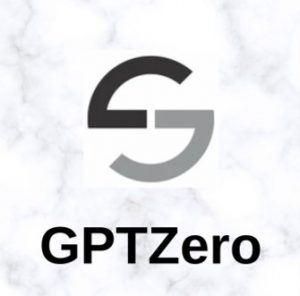ChatGPT, one of history’s most widely adopted internet tools, has become increasingly popular among students and professionals for completing university essays, schoolwork, and other tasks. Along with the rise in generative AI tools and AI-generated content, a number of AI detection tools and software have also been released. But several recent incidents have fueled skepticism about AI detector tools.

In one notable case, a Twitter user shared a screenshot showing that well-known AI plagiarism detectors flagged the US Constitution as AI-generated content. According to the AI content detector, “ZeroGPT,” 92.15% of the United States Constitution was allegedly written by AI. Another user reported a different AI content detector tool. It predicted that 59% of the United States Constitution was AI-generated.
These incidents raise the critical question: Can AI-generated content indeed be detected? This question becomes crucial specially as cybercrime rates using AI tools continue to rise?
The Questionable Authenticity of AI Detector Tools
As reliance on AI-driven services grows, so does the demand for AI detection software to identify content generated by such tools. Despite the emergence of AI detector tools, concerns have been raised about their authenticity and effectiveness. Two primary reasons underlie these doubts:
- The workings of many AI detector tools are not fully understood. This is raising questions about their reliability.
- Some tools produce seemingly random results, further casting doubt on their accuracy.
Also Read: AI-Generated Song Goes Viral
The Relationship Between ZeroGPT and ChatGPT
Interestingly, ZeroGPT, the AI content detector involved in the US Constitution incident, was released by the same company responsible for creating ChatGPT – OpenAI. The release of ZeroGPT occurred just a few months ago, and its questionable accuracy has sparked concerns about the effectiveness of AI detection tools in general.

The Challenge of Detecting AI-Generated Content
As AI-generated content becomes more sophisticated, detecting it becomes increasingly difficult. While AI detection tools may help identify some AI-generated content, their accuracy, and reliability are far from guaranteed. This poses a challenge for educators, businesses, and individuals who need to verify the authenticity of content in a world where AI-generated material is becoming more prevalent.
Also Read: New AI from HyperWrite Can Browse the Web Like a Human
Further research and development in AI detection technology are needed to address this issue. This may include improving existing algorithms, developing new detection methods, and promoting collaboration between AI content generation and detection developers. Additionally, the AI community must work towards creating more transparent and reliable detection tools that can effectively identify AI-generated content without producing false positives or misleading results.

Educating Users on AI Detection Limitations and Potential Misuse
As AI detection software continues to evolve, users must be aware of its limitations and potential for misuse. Educational institutions, businesses, and individuals should be mindful of the risks of relying solely on AI detection tools to identify AI-generated content. Instead, a combination of such tools, human judgment, and other verification methods should be employed to ensure the authenticity of the content.
Moreover, fostering a culture of responsible AI use and ethical behavior is crucial, emphasizing the importance of creating original content and discouraging the misuse of AI-generated content for malicious purposes or academic dishonesty.
Also Read: GPT-4 Capable of Doing Autonomous Scientific Research
Our Say
The rise of ChatGPT and other AI-generated content tools has led to a growing demand for AI detection software. While some AI detector tools have emerged, their authenticity and effectiveness remain questionable. Incidents like the US Constitution being flagged as AI-generated content highlight the need for improved detection methods and increased transparency in AI detection tools. By advancing AI detection technology and fostering a culture of responsible AI use, society can benefit from AI-generated content while minimizing the risks associated with its misuse.




